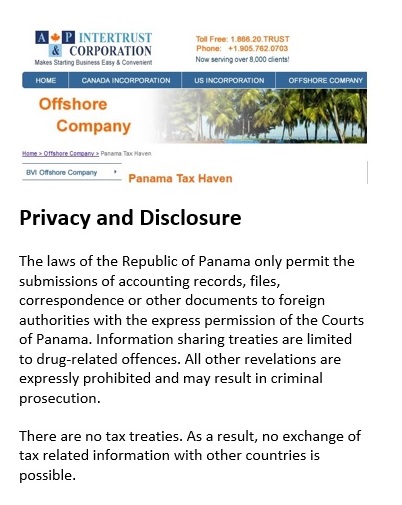
John Christensen ■ Panama: the making of a tax haven and rogue state
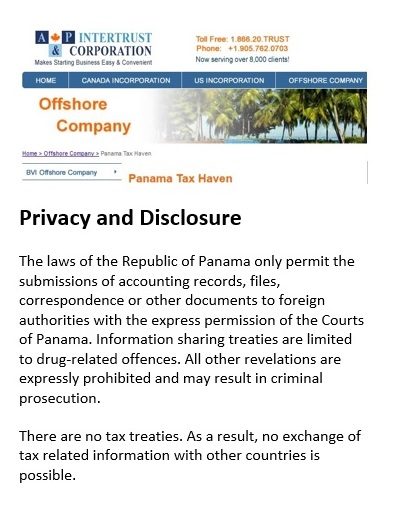
Panama is attracting much media attention at the moment, and for good reason. Earlier this month we blogged on a BBC Hard Talk interview with Panama’s Vice President which referred to our comment that Panama gives “the middle finger” to the rest of the world when it comes to tackling financial crimes. The OECD’s Pascal Saint Amans has joined the fray, stating that “From the standpoint of reputation, Panama is still the only place where people still believe they can hide their money.” Until now Panama has been fairly indifferent to reputational issues, but the increased attention that Panama receives will inevitably raise concerns among the punters that Panama is no longer able to effectively protect the identity of the crooks and scammers attracted by its dodgy laws and equally dodgy law firms. So now is a good moment to draw attention to how Panama developed as a secrecy jurisdiction and how it continues to provide full service – wash, rinse and dry – to crooks and money launderers from around the world.
Panama ranks at 14th position on the 2015 Financial Secrecy Index, with a high secrecy score of 72 but a low global scale weighting due to its relatively small share of the global market for offshore financial services. The high secrecy score placed Panama within the top twenty ranking for which reason it remains a jurisdiction of particular concern.
Long the recipient of drugs money from Latin America, plus ample other sources of dirty money from the U.S.A. and elsewhere, it is one of the oldest and best known tax havens in the Americas. In recent years it has adopted a hardline position as a jurisdiction that refuses to co-operate with international transparency initiatives.
In The Sink, a book about tax havens, a U.S. Customs official is quoted as saying:
“The country is filled with dishonest lawyers, dishonest bankers, dishonest company formation agents and dishonest companies registered there by those dishonest lawyers so that they can deposit dirty money into their dishonest banks. The Free Trade Zone is the black hole through which Panama has become one of the filthiest money laundering sinks in the world.”
Panama has over 350,000 secretive International Business Companies (IBCs) registered: the third largest number in the world after Hong Kong and the BVI. Alongside incorporation of IBCs, Panama is active in forming tax-evading foundations and trusts, insurance, and boat and shipping registration. Violation of financial secrecy is punishable by prison.
Panama’s offshore sector is intimately tied to the Panama canal, which (along with its strategic position between North and South America) has made it a gateway and entrepôt for international trade. There are strong similarities between Panama and other leading tax havens like Hong Kong, Singapore and Dubai. On paper at least, Panama has the largest shipping fleet in the world, greater than those of the US and China combined.
History: how Panama became a secrecy jurisdiction
An in-depth investigation by U.S. journalist Ken Silverstein in Vice Magazine in 2014 explains in colourful language how Panama itself came into being, with U.S. help:
“In 1903, the administration of Theodore Roosevelt created the country after bullying Colombia to hand over what was then the province of Panama. Roosevelt acted at the behest of various banking groups, among them J. P. Morgan & Co., which was appointed as the country’s official ‘fiscal agent’.”
This had happened as a result of a covert operation approved by the Roosevelt administration to foment an armed rebellion to wrest Panama away from the then politically fragile Colombia. Roosevelt achieved this goal with the help of William Cromwell, a well connected U.S. Republican lawyer who was legal council for JP Morgan’s railroad interests. The Administration’s key objective was to ‘liberate’ Panama for the purposes of securing rights over the Panama canal. The result was the Hay-Bunau-Varilla Treaty of November 1903, establishing permanent U.S. rights to a Panama Canal Zone several miles wide, stretching across the isthmus. Panama became independent that same month. The U.S.-backed project to build a canal through Panama, connecting the Atlantic and Pacific Oceans for trade, went ahead, and the canal opened in 1914.
The secrecy jurisdiction emerged shortly afterwards. As an academic study summarises:
“The history of Panama as a tax haven started . . . when it began to register foreign ships to help Standard Oil escape US-American taxes and regulations. Offshore finance followed in 1927, when Wall Street interests helped Panama introduce lax company incorporation laws, which let anyone start tax-free, anonymous corporations, with few questions asked. The development of Panama offshore, however, took place in the 1970s. Panama adopted the familiar tax haven model, based on the three pillars of tax havens: the tax exempt company, bank secrecy laws, and competitive incorporation laws, adopting Swiss-style banking secrecy, abolishing currency controls and setting up tax exempt companies.”
From the very beginning the shipping registry was designed in classic offshore style: minimal taxes, regulations and disclosure requirements, in order to attract foreign shipping owners who wanted to escape these things in their home jurisdictions. (This has been a leitmotif of the offshore system from the outset: affording maximum privileges to the owners of capital that would allow them to trample on workers’ rights, tax payments, and disclosure.) The Panama registry reportedly provided offshore escape routes from the outset. As one account put it:
“The first transfer of ships to Panama’s register in 1922 involved two US passenger ships wishing to serve alcohol to passengers during Prohibition. More followed as shipowners sought to avoid higher wages and improved working conditions secured through US legislation.”
Over the years, however, many Panamanians agitated for the canal zone to come under full Panamanian control, amid a long history of political instability which deterred most offshore activity. Panamanians finally got what they wanted in the 1970s. The U.S. State Department describes how the U.S. public was slowly persuaded to accept the loss of sovereignty, with the help of the Hollywood actor John Wayne, and warnings from Secretary of State Henry Kissinger that ““If these [Canal] negotiations fail, we will be beaten to death in every international forum and there will be riots all over Latin America.” The signing of two treaties happened in 1978:
“The first, called The Treaty Concerning the Permanent Neutrality and Operation of the Panama Canal, or the Neutrality Treaty, stated that the United States could use its military to defend the Panama Canal against any threat to its neutrality, thus allowing perpetual U.S. usage of the Canal. The second, called The Panama Canal Treaty, stated that the Panama Canal Zone would cease to exist on October 1, 1979, and the Canal itself would be turned over to the Panamanians on December 31, 1999. These two treaties were signed on September 7, 1977.”
While this was happening, a nascent offshore banking centre was starting to emerge, and legislation was put in place to facilitate it, with copious help from Wall Street operatives. Silverstein’s article summarises:
“Laws attracted a long line of dirtbags and dictators who used Panama to hide their stolen loot, including Ferdinand Marcos, “Baby Doc” Duvalier, and Augusto Pinochet.
When Manuel Noriega, commander of the Panama Defense Forces, took power in 1983, he essentially nationalized the money-laundering business by partnering with the Medellín drug cartel and giving it free rein to operate in the country. Noriega reliably supported American foreign policy in the region—and for years the CIA had him on its payroll—but the US lost patience when he opposed American efforts to topple the leftist Sandinista government in neighboring Nicaragua. That helped lead to the 1989 invasion of Panama that ousted Noriega and returned to power the old banking elites, heirs of the J.P. Morgan legacy.”
Most activity in Panama related to shipping, rather than offshore banking, for many years. Deposits in the banking sector began to surge, however, from almost nothing in 1970 to around US$50 billion in 1980 amid a surge in world oil prices and huge flows of Eurodollars through the offshore system (p8;) then deposits in Panama banks fell again to under $15 billion amid the Latin American debt crises and the political crises in Panama. They grew steadily after that.
Yet Panama trusts and foundations, whose assets are generally not reflected in this data (see below), are likely to be equally if not more important.
Panama as a secrecy jurisdiction today
Panama remains one of relatively few secrecy jurisdictions today that are unashamedly holding out against global transparency measures, and precious little has been done to tighten up. Vice Magazine summarises:
“Today, Panama’s financial laws remain extraordinarily lax. Foreign firms can bring unlimited amounts of money into the country without paying taxes, and an IMF report earlier this year said that of 40 recommended steps countries should take to combat money laundering and terrorism financing, Panama had fully implemented only one. In September, the New York Times reported that cronies of Russian president Vladimir Putin had funnelled money offshore through shell structures in Panama.
“When it comes to money laundering, we offer full service: rinse, wash, and dry,” said Miguel Antonio Bernal, a prominent local lawyer and political analyst. “You can go to any law firm in the city, from the smallest to the biggest, and open up a shell company with no questions asked.””
Around the same time The Economist observed, sardonically, of a particular episode when Colombia was seeking to get more information out of Panama:
“In one of the most remembered scenes of the film Casablanca, police chief Louis Renault orders the close of Rick’s Cafe when he is “shocked, shocked” to learn that there was gambling going on in the establishment. Seconds later a waiter presents Renault with his winnings from roulette.
Panama was similarly shocked when Colombia included the neighbouring country on its list of tax havens, after the Central American nation failed to meet a deadline to sign a bilateral tax information exchange agreement.”
This was almost certainly the result of Panama courting Colombian drugs money. Of course money from Mexican drugs cartels, and from many other sources, continues to flow into this jurisdiction, with a deliberate lack of attention from Panama’s authorities, egged on by the offshore financial centre.
The shipping registry, providing a ‘flag of convenience,’ is arguably Panama’s most important offshore offering. A BBC report describes what is effectively a ‘registry for sale’ with a see-no-evil policy:
“Luis Fruto, representative of the International Transport Workers’ Federation (ITF) in Panama, says the country turns a blind eye to its “responsibilities in order to acquire higher registration”
. . .
International legal requirements insist that countries operating open registries inspect vessels, comply with international regulations and investigate accidents and corruption. But critics say that Panama cuts corners in all these tasks, putting maritime workers at risk. Indeed, accidents involving Panamanian-registered ships are high.”
A private adviser told TJN in 2014 that Panama was taking what he called a “F*** You” approach to international co-operation:
“Panama remains a big hole, the biggest hole, and a really serious problem.”
IMF reports are littered with criticisms of Panama. For instance, the IMF’s latest February 2014 report noted, in unusually blunt language:
“Panama is vulnerable to money laundering (ML) from a number of sources including drug trafficking and other predicate crimes committed abroad such as fraud, financial and tax crimes. It is a country with an open, dollarized economy and, as a regional and international financial and corporate services center, offers a wide range of offshore financial and corporate services. It is also a transit point for drug trafficking from South American countries with some of the highest levels of production and trafficking of illegal drugs in the world. These factors put the country at high risk of being used for ML. Although the authorities have not conducted a risk assessment, they attribute the largest sources of ML to drug trafficking and other predicate crimes committed abroad.”
Overall, Panama remains a jurisdiction of extreme concern for TJN, and its rank at 14th position in our 2015 Financial Secrecy Index probably understates the harmful nature of Panama’s offshore activity since a significant proportion – such as its shipping registry – is not covered by the IMF data that we use to construct our ranking.
Further reading:
A short list of Panama’s offerings is here.
The IMF provides a much longer laundry list of problems, notably:
- ROSC—FATF Recommendations for Anti-Money Laundering and Combating the Financing of Terrorism, IMF, Feb 2014
- Panama: detailed assessment report, IMF, Feb 2014
Panama, Free-Trade Tax Haven, Sept 2011
Ken Rijock’s blog: Analysis and commentary on money laundering and financial crime. With endless material on Panama.
Interview on Panama foundations: From an interview with an offshore provider of foundations.
The Law Firm That Works with Oligarchs, Money Launderers, and Dictators – Vice Magazine, Dec 2014 (by Ken Silverstein)
Related articles
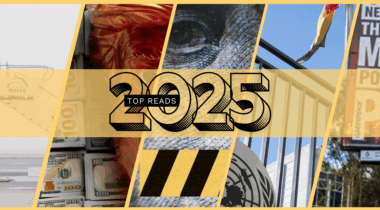
The tax justice stories that defined 2025

2025: The year tax justice became part of the world’s problem-solving infrastructure
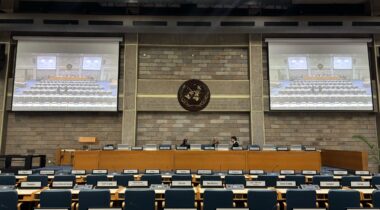
‘Illicit financial flows as a definition is the elephant in the room’ — India at the UN tax negotiations
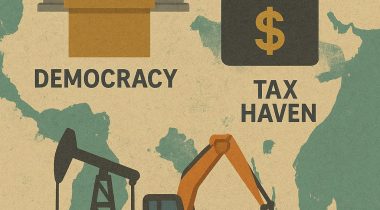
Tackling Profit Shifting in the Oil and Gas Sector for a Just Transition

Follow the money: Rethinking geographical risk assessment in money laundering

Democracy, Natural Resources, and the use of Tax Havens by Firms in Emerging Markets
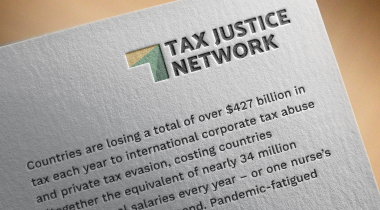
The Financial Secrecy Index, a cherished tool for policy research across the globe
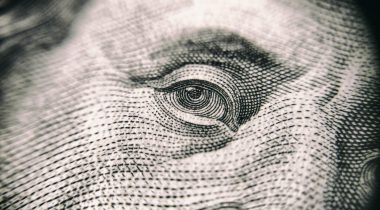
Vulnerabilities to illicit financial flows: complementing national risk assessments

Do it like a tax haven: deny 24,000 children an education to send 2 to school



